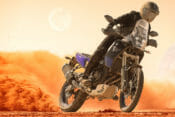Alessandro Valia Interview | Mr. Ducati
Alessandro Valia is the man responsible for developing almost every Ducati in the current lineup. We sat down with him for a chat as part of the Cycle News Live series.

Developing motorcycles, especially Ducatis, is a very high-stakes game. And indeed, the job of Lead Development Rider has become one of the most sought after in the motorcycle industry.
Ducati’s man in this position is Alessandro Valia. A former WorldSBK racer who still competes in the Italian Championship on occasion, Valia is considered one of the world’s best development riders, working closely with every department of Ducati Motor Holding in creating their products.
We caught up with Valia to hear just how he develops a motorcycle from start to finish.
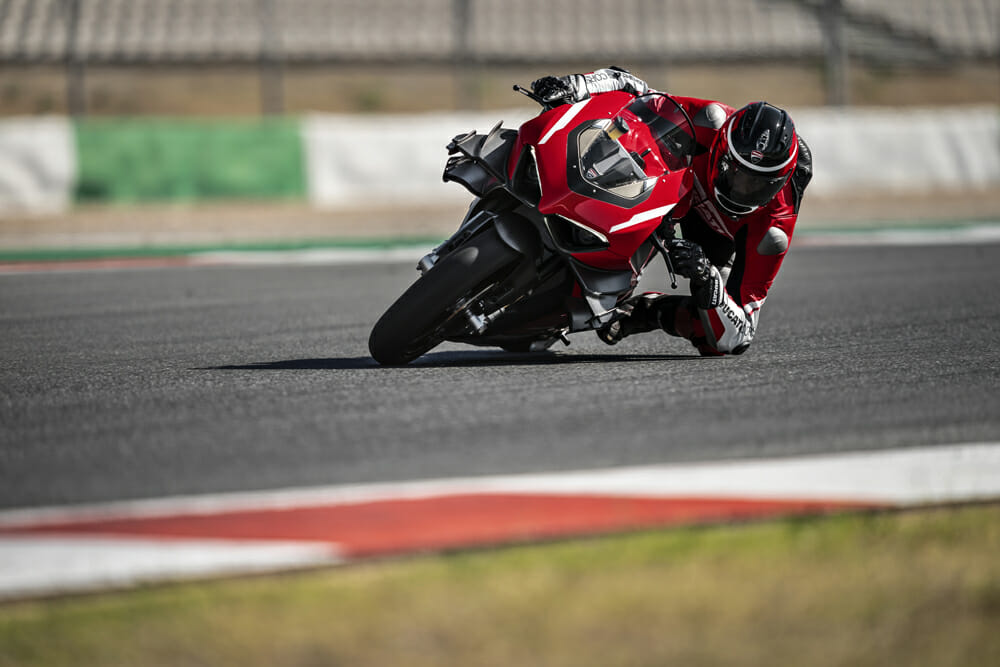
You were a very accomplished racer in your own right. Tell us a little about that.
Yes. World Superbike in 2002. I was Italian Superstock Champion in 2002, and then I started with the development of the factory bike, Ducati 999, in 2003.
It was the same position Michele Pirro occupies now. We worked on the development of the engine, the chassis and all the package of the bike that won the world championship with Neil Hodgson in 2003.
That’s become a very famous bike, the 999. What was good about that bike? At the time, it was so different to the 916, 998 eras.
It was a big jump in terms of engine. It was more agile in comparison with the 998 but stable at the same time. So, I think it was a really good, fast bike.
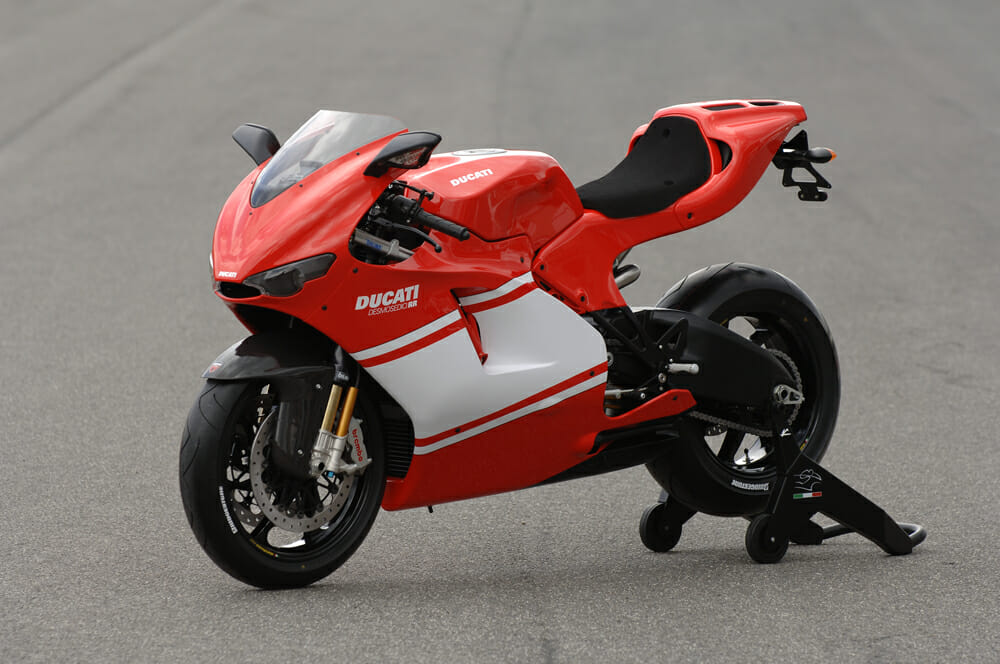
Jumping from the World Superbikes and with your test-riding skills, when did you then move to the production side of things?
In 2007 I moved to the production bikes and I started immediately with a masterpiece—the Ducati Desmosedici RR. It was my first love in the production of Ducati Motor Holding. It was really a great bike—very exotic.
The first week with this new work, I understood the strength of the brand Ducati, because when I test it on a normal road, everyone was there, everyone was excited when they see this bike. It was incredible to ride this bike on a normal road.
That’s a hugely important bike, too, in Ducati’s history, first real production street MotoGP bike.
Yes. It was really MotoGP. I remember the first day in Ducati Motor Holding when the project engineer of this bike asked me to test it in order to make my opinion for the normal road.
When he showed me the bike, I said, “That bike? Are you sure?” There was no legal plate, no mirrors, nothing. It was really a full-spec MotoGP bike. I said, “How can I go on normal roads with this bike?” He said, “Never mind. Put the plate on the back and go out and test the bike.” I said, “Okay.” Also, the police, they were very happy to see this bike. It was incredible.
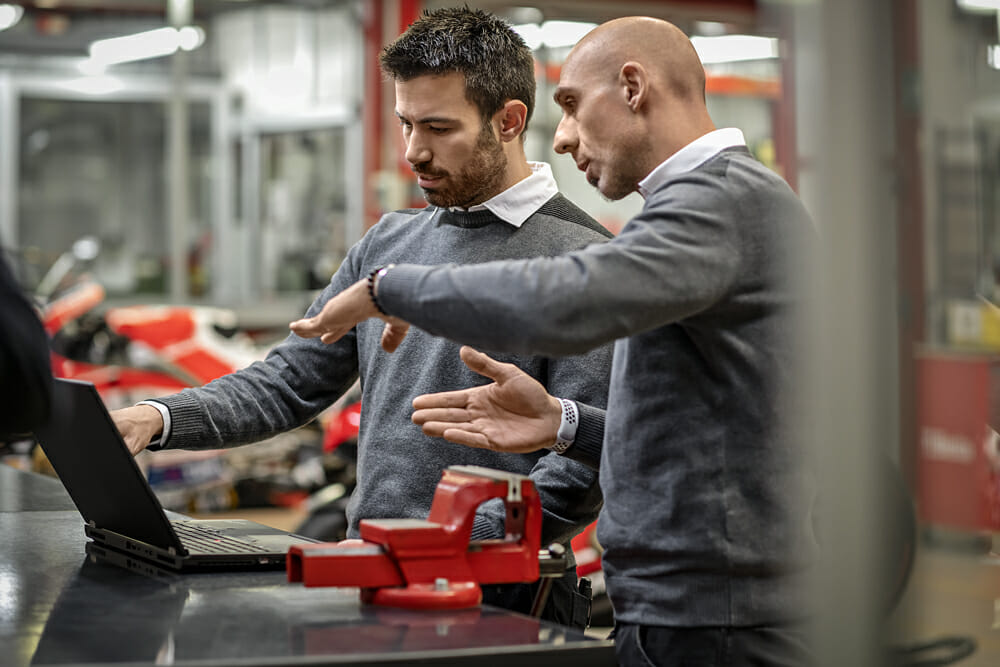
You took a real MotoGP bike on the road?
Yeah, on the road. Sometimes it was a funny moment when they stopped me to control something about my license and the bike, but they understood immediately that the bike was a racing bike, not a normal road bike.
They asked me to make a wheelie. I said, “No. You are crazy.” I would never make a wheelie in front of you.” They said, “No, I want to make a video for a friend of mine.” I said, “Okay.” This is Ducati racing. It’s incredible.
You guys have a special past in Italy by the sound of things.
I think so. Ducati, Lamborghini and Ferrari are something special.
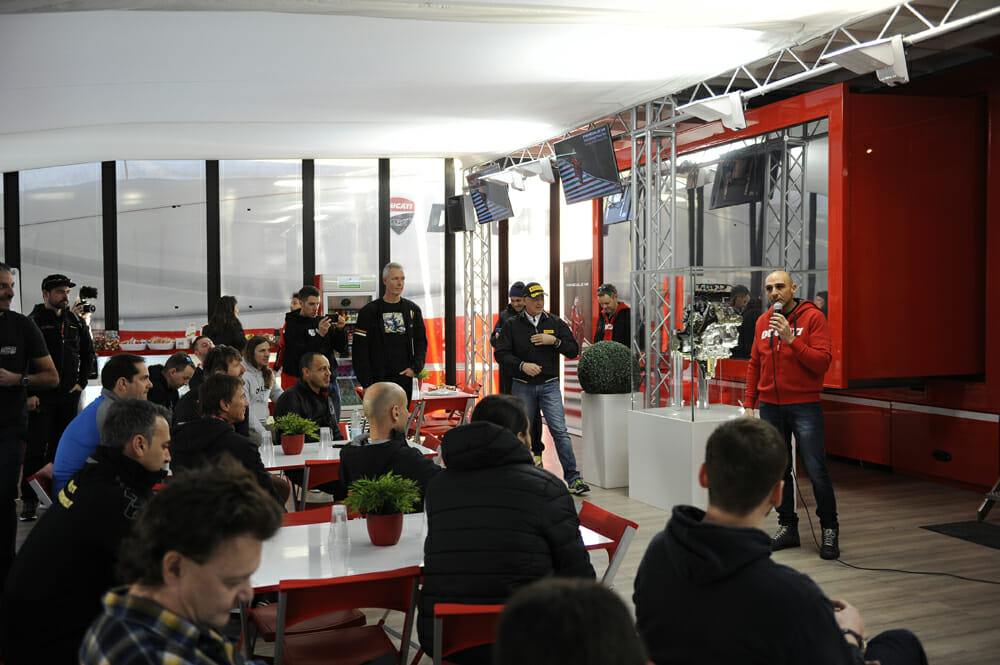
Tell us a little of the 1090 range.
Yeah. In the meantime, I start working also on this. It was a great bike. We won a lot of races also with this. It was a complete change of direction in terms of style, coming from the 999. It was something that I remember in one of the first meetings with Claudio Domenicali (Ducati CEO), he said we wanted to go back to basic with this bike, because it reminds him a lot of the 916.
It was really interesting to start working with the bike that had, for example, a big disc on the braking system. It was the first bike that had 330mm discs, and a powerful engine with lots of torque—really, really, Italian.
When did you guys start with the development of the Desmosedici Stradale V4?
We start in 2015. We start with the new Panigale V4, and also there it was another big step in the development because it was the first time that we put into production a four-cylinder bike with this kind of power (not including the Desmosedici D16RR).
It was a changing of philosophy, for sure. We wanted to add something that keeps the performance, that allows us to win the World Superbike Championship. So, last year, we were very close to winning the championship in Superbike, but as you know it was not possible.
But we would like to have something also on normal roads that could be a useful bike. This four-cylinder, the Desmosedici Stradale, I think is a magic engine because it keeps the torque and the trust at a low-medium range of rpm, and the power when you go in the highest part of the rpm indicator.

How did the new four-cylinder motor change the way of thinking for Ducati?
We changed completely the philosophy because, as I said, we would like to reach the performance that gives us the possibility to win the world championship, but also a bike that was smooth in the low RPM, something more usable on normal roads.
It was really a change in our philosophy that we put also in the Streetfighter. This engine has the same firing order of the MotoGP to have the big torque at medium range but power at high revs and the smoothness of the four-cylinder.
Tell us a little bit about the development phases that you guys went through to create the Streetfighter.
As we do with all the projects, we start from the project brief where we fix the milestone of the vehicle. Then we move in a parallel way, so we start the drawing the aesthetic of the bike. Then we look at the ergonomics of the bike and also on the geometry. This is the first phase, where we make something like a patchwork on the vehicle and put different components coming from different projects, for example, the seat of the Monster and the handlebar of the Multistrada or something else.
Then we start working on the position of the handlebar and the seat and the footrests, the rider triangle. Then we fix the position of the engine in the chassis. For example, in the Panigale before but also in the Streetfighter, we rotated back the motor 42 degrees in order to have more room for the front of the motor to come closer with the front wheel. Then we fix all the geometry, so the wheelbase, the chain, the offset of the bike, and we give the character to the handling of the bike.
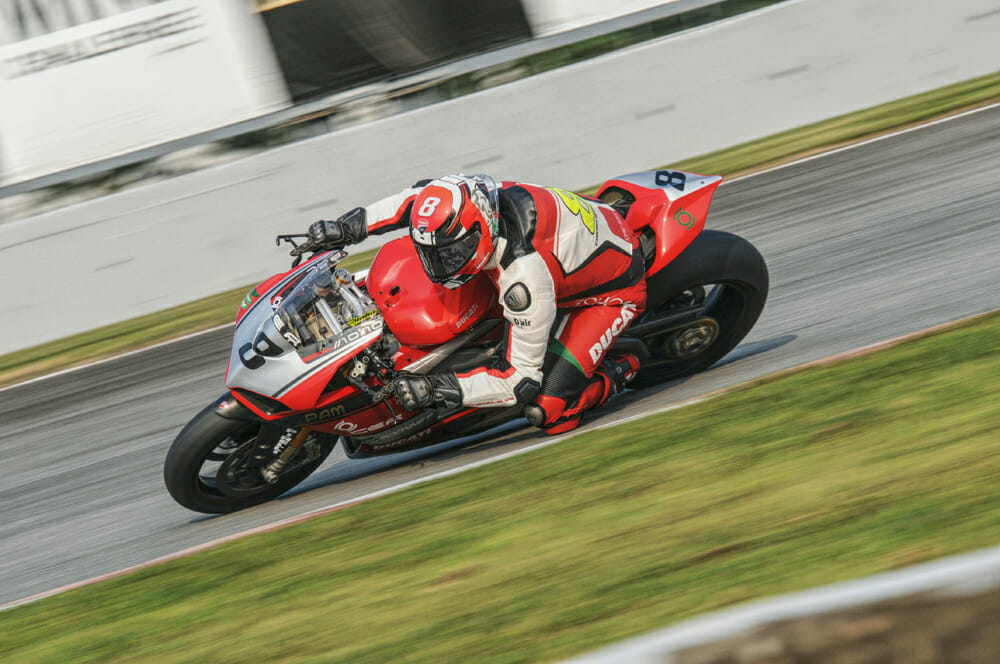
How many different iterations would you go through, do you think, trying to find that ideal riding position? You must develop the bike for a huge array of riders, guys that are super tall, very short, heavy, light. How do you come up with what you guys think is the right position and the suspension setup?
I start working on the bike trying to understand the positioning of the bike in the market and the mission of the bike. Then when I find something that I like, we have a panel of test riders that have different backgrounds, that have different sizes. We make this test, this standard test, and there we understand if my proposal is okay or we must change something to make everyone happy.
It’s not easy to come and give the satisfaction to all the riders, but for sure we try to go in the direction to have a comfortable ergonomic. For example, our Panigale V4 I think is the most comfortable supersport bike because we put the footrests not so close to the seat. This is very important. Also, the position of the handlebars gives to the upper side of the body a natural position, so you don’t have to move too much toward the front to avoid neck pain and so on.
In terms of the dynamic testing for a bike, are you going out and doing big road miles with data loggers? How does it all work?
Usually I work on the development on racetracks. So, for every project, we start in a big testing ground that we have in the south of Italy that is called Nardo Technical Center (also technical home for Porsche, Audi and Bentley) where there is a big 12-kilometer ring (7.4 miles). It’s really incredible. There we can test the reliability of the bike, of the components, but also, we make a high-speed test from an aerodynamic point of view and comfort for the rider.
Then inside this ring there’s a track that is similar to Mugello. It’s seven kilometers long (4.3 miles). And the other facilities, like a road for suspension testing. They have a noise test track and also off-road test track.
We can start the development of the bike there and then we move to other tracks, for example, supersport bikes for the Panigale V2, V4 and also the normal road because I have to check the behavior of the bike also on normal roads. This is very important. Then we have also another kind of test that is the reliability tester that we start in Nardo, where we ride for 1000 kilometers, both on the ring where we go full throttle in sixth gear and then on the track. We make half week on the track and half week in the ring in order to have a faster reliability. Then we check it again on the last long riding that depends on the project, but we go from 50,000 kilometers to 100,000 kilometers, in the case of the Multistrada, for example.
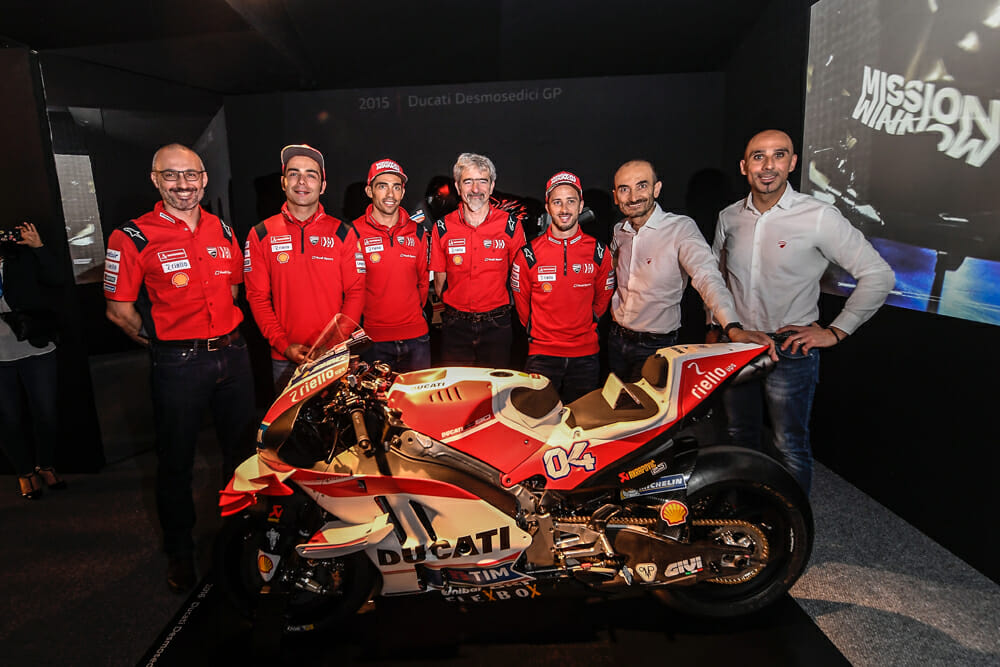
When you say you do 100,000 kilometers, are you talking about it being on a dyno or a normal road?
No, on a normal road.
That’s a lot of seat time.
Yes, we ride day and night. Not all the night, but we ride most of the day and part of when it’s dark also.
When you talk about the Multistrada then, how does your development mind then change from a sport bike to something that is designed to be an all-roads bike?
For sure the approach is different because the core business of the superbike must be faster on track, and it allows different riders who have different riding skills to reach their maximum performance. The performance is the core of the supersport bike.
When we speak about the Multistrada we change our focus to be more on rider comfort, passenger comfort, aerodynamic protection, the confidence and how friendly the bike is with the rider.
It’s a completely different approach, but we want to keep also the racing DNA of Ducati, so in the Multistrada you’ll find a comfortable bike you can use also for a long trip, but when you twist the grip you feel the racing heart of the Ducati.

The Multistrada was one of the first bikes that pioneered the use of electronic suspension. How has that changed in the past decade?
We were quite early pioneers in this technology. We understood immediately that it was really good for the rider and for the vehicle. We started working on the software that works with this suspension, and we develop all these years new functionalities to have a real-time suspension setup on the vehicle.
The Multistrada is, I think, the example of this work where the system reacts immediately when you find a hole on a normal road or when you make some maneuver like braking, accelerating, wheelieing, or leaning the bike. So, we change in real time the damping of the suspension, and on the shock, we work on the preload of the spring in order to change the load mode.
There are different technologies behind the system. For example, in the Multistrada, we have semi-active suspensions where we work in real time on the setting, and they are very, very fast changing the damping—going from the maximum damping to the minimum in some milliseconds.
On the Panigale before, and on other supersport implications, we have the event-based suspension. So, the philosophy is different. It works only on the different events that are, for example, braking, acceleration, and then the mid-corner.
We work in these three different situations and we adjust the damping in order to have the right setup. We use for both the technologies the Inertial Measurement Unit (IMU), the sensor that gives us the information about what the bike is doing. If it’s accelerating, if it’s leaning, wheelieing or pitching.
That was going to be my next question, talking about the IMU. That was a huge breakthrough for motorcycles when it first came out.
Yes. It was a big jump to the future because with this little magic box that is this dimension, we understood everything on the bike. So, we know exactly the lean angle, and this introduced also a big possibility on the ABS because we had the cornering ABS thanks to this sensor.
For traction control, we know exactly the acceleration and the wheelie. You know that on the wheelie, we work in two different ways because our wheelie control is really accurate, and it works both on the pitch angle but also on the bank-angle rate. It’s really accurate but thanks to this sensor we had the possibility to develop a strategy that works really well.
We share different technologies from MotoGP and superbike. The IMU that we use on the Panigale V4 is the same that we use on the World Superbike. Also, different strategy of the controls. The traction control that we have on the Panigale V4, Panigale V2, and also on the new Streetfighter, is the traction control that comes directly from the Desmosedici GP18 MotoGP racer.
It’s a really good thing because we work together with Ducati Corse in order to have a continuous exchange of technology. So our bikes are really, really the last update in this sector.
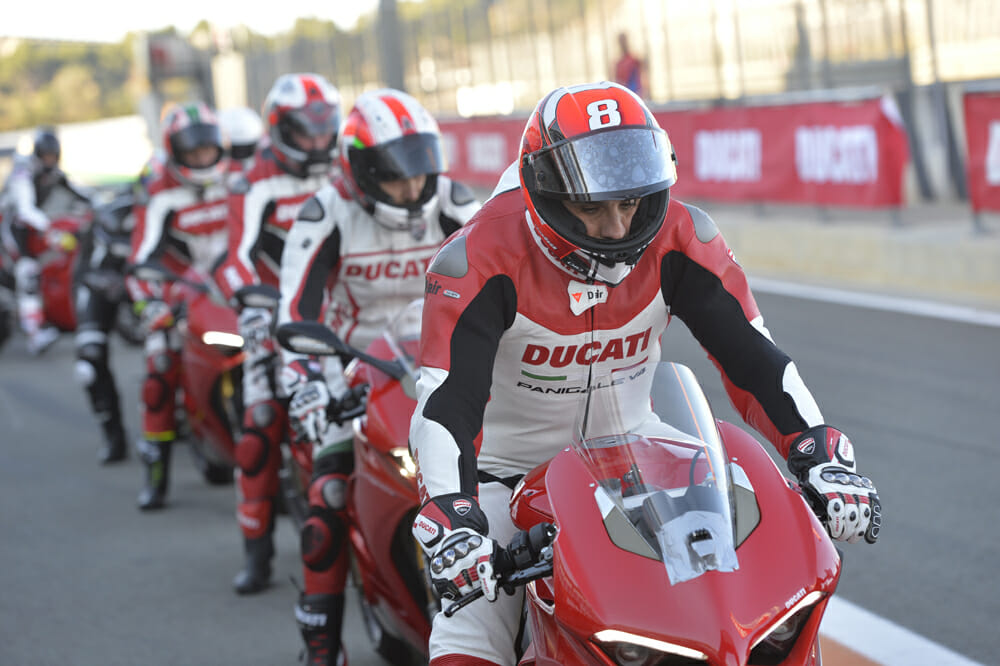
It’s interesting, too, because there is that definite link between Ducati as the production bike and then Ducati Corse as well. You guys work basically together now.
Yeah. We work together. We have different engineers that come with us. We make the fine tuning of the system together, but also the strategy, the beginning is the same. There is a big exchange of information. It’s really important for the development of the production bikes.
Ducati has a lot of young guys working there, like Panigale designer Julien Clement. That must be pretty exciting to be part of the company that has such young blood in it to be able to go forward for the future.
Yeah, for sure. It’s important to have fresh ideas that come from young people. We are a really, really young team and we work a lot together. Ducati is like a great family. We work side-by-side for hours and hours during the day. So, it’s really exciting to work with this team.CN
Here is the video of the full interview with Alessandro Valia in the Cycle News Live series
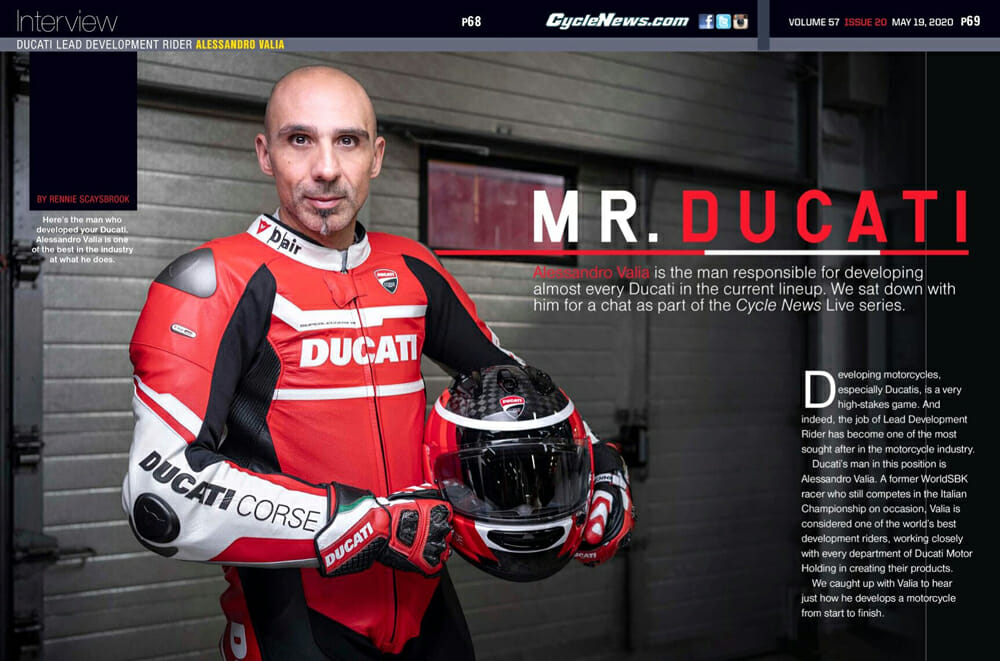
Click here to read the Alessandro Valia Interview in the Cycle News Digital Edition Magazine.
Click here for all the latest motorcycle Industry News on Cycle News.
